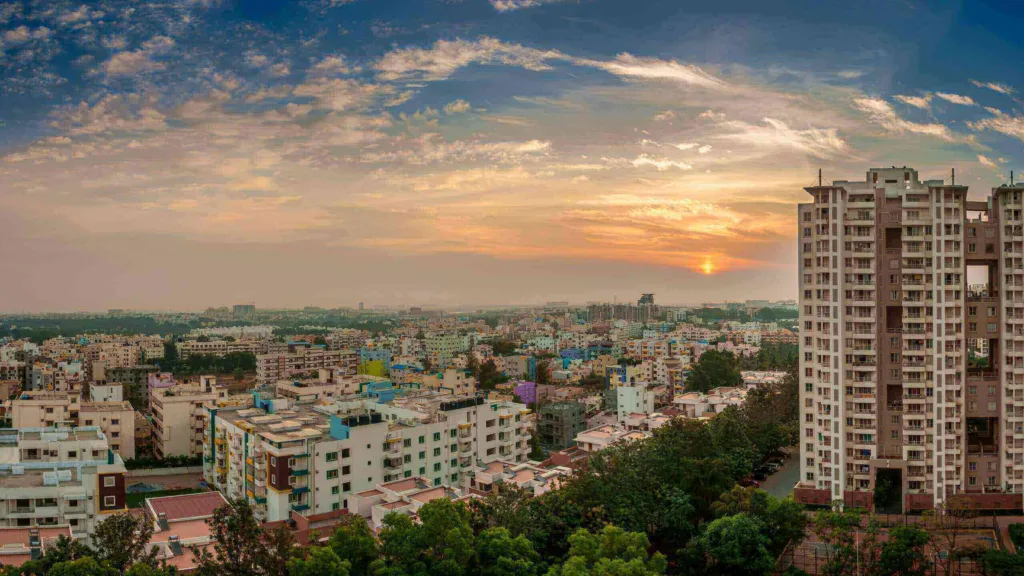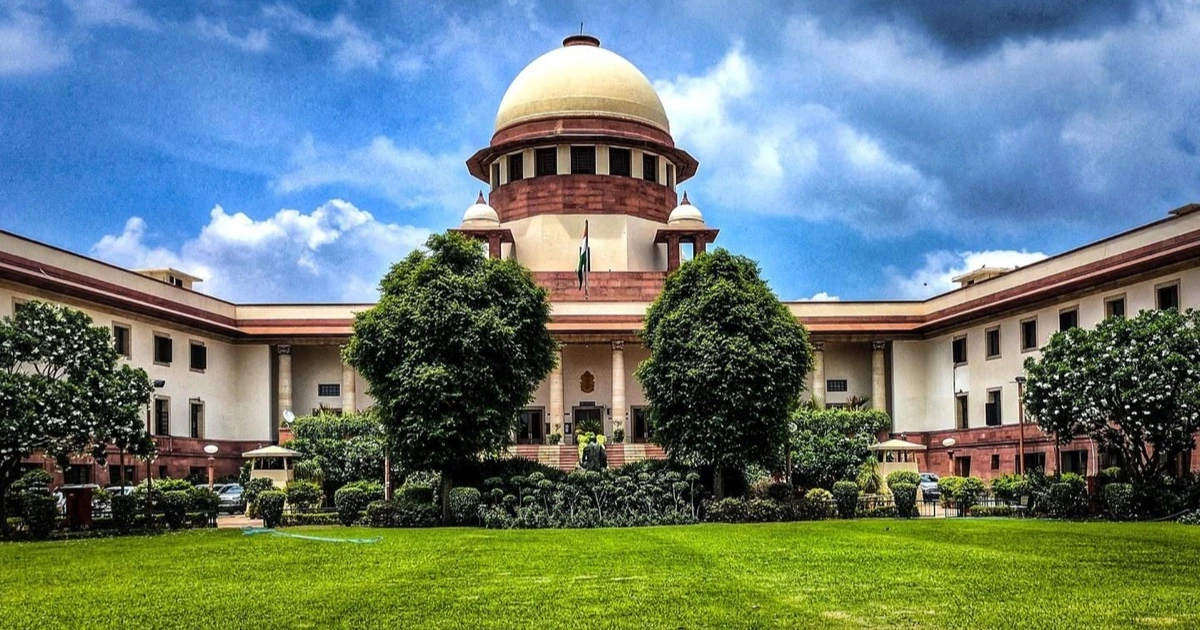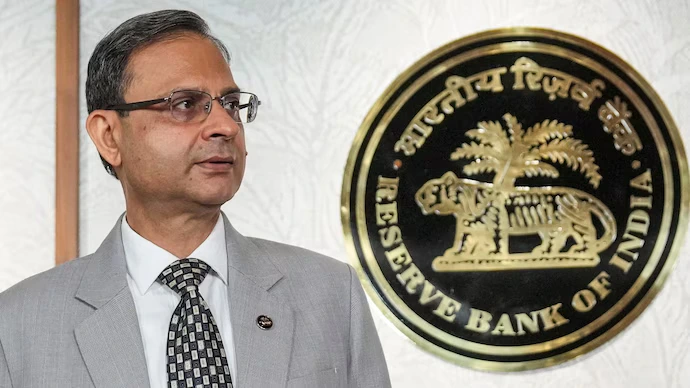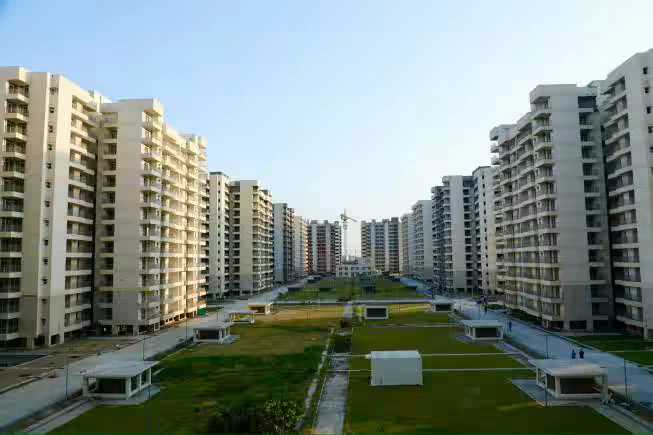Table of Content
- Bengaluru’s Expanding Real Estate Landscape
- Why Homebuyers Are Moving Beyond Core Tech Corridors
- Outskirts Offer Affordability and Growth Potential
- The Rise of Modern Townships and Gated Communities
- The Trade-Off: Connectivity and Infrastructure Gaps
- Bengaluru’s Growing Villa Market in the Outskirts
- Market Experts Predict Continued Shift to Outer Zones
- Conclusion
Bengaluru’s property market is witnessing a steady transformation. Once concentrated around its traditional tech corridors like Whitefield, Sarjapur Road, and the Outer Ring Road, housing demand is now spilling into the city’s outer zones. As Bengaluru property prices continue to surge within established IT hubs, more buyers are exploring emerging localities such as Devanahalli, Hennur, and Doddaballapur Road areas that offer both affordability and long-term value growth.
Bengaluru’s Expanding Real Estate Landscape
Over the past few years, Bengaluru property prices in prime tech corridors have risen sharply due to limited land availability and sustained demand from IT professionals. Apartments that once sold for ₹70–80 lakh now often cross the ₹1 crore mark, putting them out of reach for many middle-income families.
As a result, buyers and investors are moving toward the city’s peripheries, where land remains available and prices are relatively reasonable. These peripheral zones not only offer better space-to-cost ratios but are also witnessing improving infrastructure, such as new highways, metro extensions, and commercial developments.
Experts note that this shift marks a new phase for Bengaluru’s housing market one where buyers prioritise long-term appreciation and livability over proximity to office hubs.
Also Read: Bengaluru Housing Update: OC Waiver for Buildings on Plots Above 1,200 sq ft
Why Homebuyers Are Moving Beyond Core Tech Corridors
The affordability gap between Bengaluru’s prime locations and its outskirts has widened considerably. Popular micro-markets like Whitefield, Sarjapur Road, and Electronic City have seen significant price inflation, largely driven by continuous developer activity and the presence of major IT campuses.
“Buyers are prioritising value, open space, and long-term growth potential over proximity to offices,” says a property consultant from ANAROCK. Improved connectivity through the upcoming metro and the Satellite Town Ring Road is making these outer belts increasingly accessible.
In short, for many first-time buyers and investors, the choice is becoming clear: move slightly farther out, but secure larger, better-equipped homes for the same price as compact city apartments.
Outskirts Offer Affordability and Growth Potential
Peripheral zones such as Devanahalli, Doddaballapur Main Road, and North Bengaluru are now leading the affordability curve. Plots in these locations range between ₹4,000 and ₹5,000 per sq. ft nearly half of what one would pay in central Bengaluru.
According to ANAROCK data, Devanahalli witnessed nearly 49% price growth in the past six years, rising from ₹4,982 per sq. ft in 2019 to ₹7,400 per sq. ft in 2024. Experts expect Bengaluru property prices in these northern corridors to rise by another 8–12% annually, driven by large infrastructure investments and the development of the airport business district.
“Peripheral regions are showing faster appreciation than traditional city hubs,” says Amar Mysore, former president of CREDAI Bengaluru. “The balance between affordability and future value is what’s drawing both end-users and investors.”
The Rise of Modern Townships and Gated Communities
Developers have swiftly adapted to this demand shift by focusing on integrated townships and gated societies across the outskirts. These projects, spread over larger land parcels, offer features that city apartments can rarely match including expansive green zones, clubhouses, swimming pools, walking tracks, and electric vehicle charging facilities.
Post-pandemic preferences for open spaces and wellness-oriented amenities have further boosted this trend. As Bengaluru property prices in core areas continue to climb, these peripheral developments provide better value for money and a more community-oriented lifestyle.
Large developers such as Prestige, Sobha, and Brigade are already expanding their presence across Devanahalli, Hennur, and East Bengaluru to meet this demand.
The Trade-Off: Connectivity and Infrastructure Gaps
Despite their appeal, the outskirts come with a few challenges. Many emerging housing pockets still lack robust public transport, and long commutes remain a daily reality for residents who work in central IT corridors.
“These homes are often located far from major employment hubs,” says Sopan Gupta, Principal Partner at Square Yards. “Without seamless connectivity, commuting can be both time-consuming and expensive.”
However, ongoing metro expansions, elevated corridors, and upcoming expressways are expected to significantly reduce travel times over the next few years. Industry watchers believe that as infrastructure catches up, these areas will fully integrate into the city’s mainstream housing map making the current phase ideal for long-term investors looking to capitalise on lower entry costs.
Bengaluru’s Growing Villa Market in the Outskirts
One of the most notable trends in recent years has been the growth of the villa market in Bengaluru’s outskirts. Once considered a niche segment, villas have now become a preferred choice for upper-middle-class buyers and NRIs seeking privacy and space.
In fast-developing regions like Whitefield Extension, Chikkagubbi, Yelahanka, and Hennur Road, villa prices have jumped 10–15% year-on-year, outpacing many mid-income apartment markets. Projects priced between ₹2 crore and ₹3 crore are seeing strong demand, with luxury villas in North Bengaluru now commanding rates between ₹18,000 and ₹25,000 per sq. ft.
Industry experts attribute this to lifestyle shifts post-COVID, where buyers increasingly value open plots, green surroundings, and exclusive amenities. As Bengaluru property prices in the core city touch record highs, villas in the outskirts are being viewed as both aspirational homes and strategic investments.
Also Read: Bengaluru to Launch Mobile App for e-Khata, Promises Faster Property Services
Market Experts Predict Continued Shift to Outer Zones
Developers and real estate analysts predict that the momentum in peripheral areas is here to stay. North and East Bengaluru home to infrastructure projects like the Peripheral Ring Road, Satellite Town Ring Road, and Airport Expressway are emerging as the city’s next real estate growth engines.
Top developers, including Prestige Group, Godrej Properties, and Sobha Limited, have already announced new launches in these belts. According to Knight Frank, the share of new housing launches in the outer zones has risen by nearly 30% in the past two years.
This steady rise in Bengaluru property prices across all categories indicates a structural shift in how the city’s housing demand is evolving moving from compact, centrally located apartments to spacious homes in well-planned communities on the city’s edges.
Conclusion
As Bengaluru continues its growth as India’s technology capital, its housing market is evolving to meet changing buyer priorities. The city’s outskirts once dismissed as too remote are now redefining the meaning of affordable luxury.
Improving transport links, new business corridors, and township-style living have transformed these regions into desirable residential hubs.
Ultimately, Bengaluru property prices reflect this ongoing transformation with central areas commanding premium rates while the peripheries emerge as the new frontier for smart homebuyers.
As infrastructure expands and the city continues to grow outward, the outskirts of Bengaluru will remain a strong magnet for both end-users and investors, shaping the city’s real estate story for years to come.







Ans 1. With property prices in central tech corridors like Whitefield, Sarjapur Road, and Outer Ring Road rising sharply, buyers are seeking affordable alternatives in peripheral areas such as Devanahalli, Hennur, and Doddaballapur Road. These locations offer better space-to-cost ratios and long-term appreciation potential.
Ans 2. Key emerging micro-markets include Devanahalli, Hennur Road, Doddaballapur Main Road, North Bengaluru, and East Bengaluru, driven by affordability, infrastructure development, and upcoming metro and expressway connectivity.
Ans 3. For example, Devanahalli has seen nearly 49% price growth over the past six years, rising from ₹4,982 per sq. ft in 2019 to ₹7,400 per sq. ft in 2024. Experts expect continued annual growth of 8–12% in these northern corridors.
Ans 4. Peripheral areas feature integrated townships, gated communities, and villas with amenities such as green zones, clubhouses, swimming pools, walking tracks, and EV charging facilities. Villas priced between ₹2 crore and ₹3 crore are particularly in demand among upper-middle-class buyers and NRIs.
Ans 5. Despite affordability, many emerging housing pockets lack robust public transport and long commutes to central IT hubs can be time-consuming. However, ongoing metro expansions, elevated corridors, and new expressways are gradually improving connectivity.
Ans 6. Major developers like Prestige Group, Sobha Limited, Brigade, and Godrej Properties are launching new township-style projects in peripheral zones, offering larger homes, modern amenities, and community-centric living to match evolving buyer priorities.
Ans 7. Yes. Peripheral areas are witnessing faster appreciation than core city hubs, making them attractive for both end-users seeking affordable luxury and investors looking for long-term capital growth.
Ans 8. Villas have grown from a niche to a mainstream segment, with prices in North Bengaluru ranging from ₹18,000 to ₹25,000 per sq. ft, driven by post-pandemic lifestyle preferences for open space, greenery, and privacy.
Ans 9. Projects like the Peripheral Ring Road, Satellite Town Ring Road, Airport Expressway, and metro extensions are enhancing connectivity, making outer Bengaluru more accessible and increasing property demand.
Ans 10. Yes. As Bengaluru’s city center becomes increasingly expensive and peripheral infrastructure improves, the outskirts are expected to remain a strong magnet for homebuyers and investors for the foreseeable future.